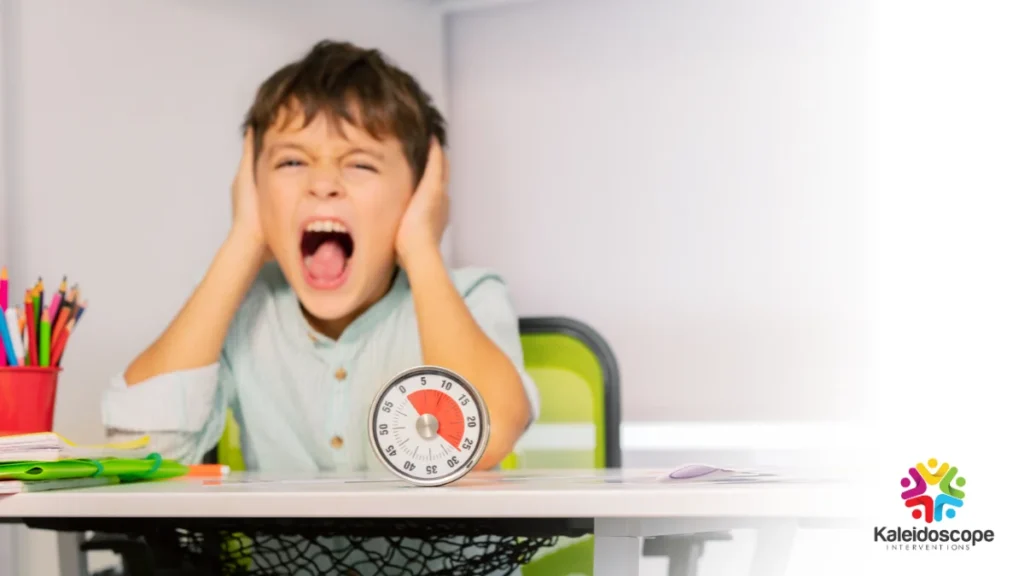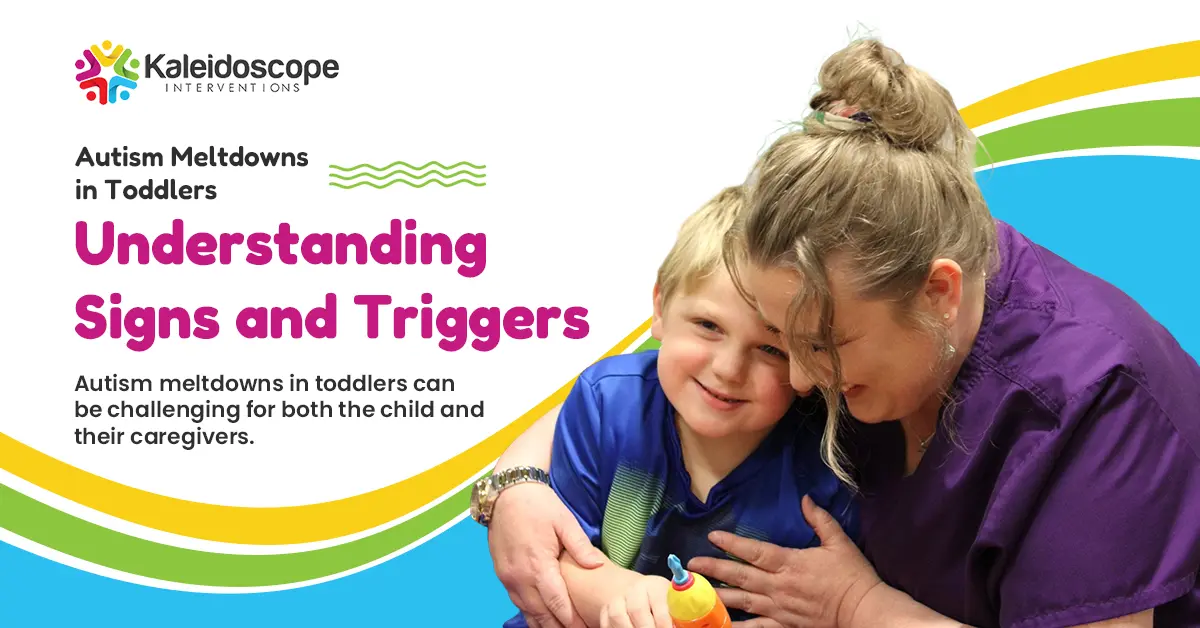Autism aggressive behavior can be a challenging aspect for both children and their families, often leading to stress and uncertainty. Aggression, while challenging, is often a form of communication. Parents and caregivers can foster a more peaceful environment by identifying triggers and implementing effective strategies.
Our approach combines evidence-based practices and compassionate support, helping children navigate their emotions and develop healthier coping mechanisms. In this guide, we’ll explore the top five strategies to manage autism aggressive behaviors in children, providing actionable insights to improve both their emotional well-being and family dynamics.
1. Understand the Root Cause of Aggressive Behavior Autism

Aggressive behavior in children with autism is often a way for them to communicate unmet needs or feelings of frustration. It’s important to understand that children with autism may struggle to express emotions or communicate effectively, which can lead to outbursts. Identifying the underlying causes of this behavior is the first step in managing it.
Common Triggers of Autism Aggressive Behavior
Some of the most frequent triggers of aggressive behavior in children with autism include:
- Sensory Overload: Children with autism often experience heightened sensitivity to noise, lights, textures, or smells. Overstimulation from their environment can cause them to feel overwhelmed, leading to aggression as a way to cope.
- Communication Barriers: Children with autism may struggle to verbalize their needs or express discomfort. When they cannot communicate effectively, frustration can build up, which might result in aggressive behaviors.
- Changes in Routine: Children on this spectrum often rely on routines to feel secure. Sudden changes or disruptions can create anxiety, prompting aggressive responses.
Observing Patterns
One of the most effective ways to understand aggressive behavior in autism is to observe patterns over time. Note when the aggression occurs, what precedes it, and how the child reacts. Keeping a behavior journal can help parents and caregivers identify specific triggers or patterns, enabling them to predict and potentially prevent future episodes.
Building Emotional Awareness
Another critical step is helping children with autism recognize their own emotions. Visual aids, emotion charts, or social stories can help them connect their feelings with appropriate responses rather than aggression. Over time, this awareness empowers children to manage their emotions more effectively and reduces aggressive outbursts.
2. Decreasing Aggressive Behavior Autism Through Consistent Routines
For children with autism, a consistent routine can be a powerful tool in decreasing aggressive behavior. Predictability offers comfort and security, helping to reduce the anxiety that can often lead to outbursts. When routines are established, children with autism know what to expect, and this sense of control can greatly minimize frustration and the aggressive behaviors that stem from it.
The Importance of Structure
Children with autism thrive in structured settings where they can anticipate what comes next. Changes, even small ones, can feel overwhelming and cause stress. A consistent routine helps reduce this stress and creates a calm atmosphere, allowing children to focus better and manage their emotions more effectively.
To decrease aggressive behavior autism, consider creating daily routines for activities like:
- Waking up and Bedtime: Keep consistent times for waking up and going to bed. This regulates their body clock and reduces the unpredictability of transitions, which can trigger aggressive behaviors.
- Mealtimes: Ensure meals happen around the same time each day. A visual mealtime preparation and cleanup schedule can provide a sense of control.
- Therapies and Playtime: Schedule therapy sessions, playtime, and learning activities at regular intervals. Predictable activities help children know what to expect, easing the transitions between tasks.
Visual Schedules as a Tool
One effective way to implement routines is by using visual schedules. These can be as simple as picture cards showing the steps of a daily routine or digital apps that track activities. Visual schedules help children with autism understand what will happen next, reducing anxiety and helping them transition between activities smoothly. Providing a countdown or using a timer before a transition can reduce stress for some.
Flexibility Within the Routine
While consistency is critical, it’s also essential to maintain some flexibility. Allow for short, predictable breaks or downtime when needed, as this can help prevent sensory overload and burnout. Flexibility within a routine makes children feel secure while preparing them for inevitable changes.
3. Aggression Autism Intervention: Using Positive Reinforcement

One of the most effective methods for managing aggression in children with autism is positive reinforcement. This intervention focuses on rewarding desired behaviors rather than punishing aggressive ones. By encouraging positive actions, children learn that there are more effective ways to communicate their needs and emotions, reducing the likelihood of aggression.
How Positive Reinforcement Works
Positive reinforcement involves providing immediate and meaningful rewards when a child exhibits a desired behavior. This can be as straightforward as offering praise, a favorite toy, or a small treat. The key is reinforcing the behavior you want to see more of, whether using words instead of hitting or staying calm during transitions. Over time, the child associates positive behaviors with rewards, making them more likely to repeat those actions.
Some examples of positive reinforcement in an aggression autism intervention include:
- Verbal Praise: A simple “Good job staying calm!” can go a long way in boosting positive behavior.
- Tangible Rewards: Stickers, small toys, or a few extra minutes of screen time can be motivating for children when they engage in non-aggressive behaviors.
- Social Reinforcement: Extra attention or time spent doing a favorite chore, like playing a game or reading a book, can be a mighty reward.
Teaching Alternative Behaviors
Positive reinforcement is not just about praising good behavior; it’s also about teaching alternatives to aggression. For instance, if a child tends to lash out when frustrated, caregivers can reinforce calm behaviors like deep breathing, using words, or seeking help from an adult. Every time the child uses these alternative behaviors, they should be rewarded promptly to encourage repetition.
Consistency is Key
For positive reinforcement to be successful, it must be applied consistently. Ensure that everyone involved in the child’s care—parents, teachers, therapists—is on the same page. Consistency helps the child understand that positive behaviors will always be rewarded, making replacing aggression with healthier coping mechanisms easier.
4. Implementing Sensory Tools and Calm-Down Strategies
For children with autism, sensory sensitivities can often be overwhelming, leading to aggressive behaviors as a response to discomfort. Implementing sensory tools and teaching calm-down strategies can effectively manage these outbursts. By providing children with ways to self-soothe and regulate their emotions, caregivers can help reduce the frequency and intensity of aggressive behaviors.
Sensory Tools for Emotional Regulation
Sensory tools help children with autism manage the overstimulation they often experience. These tools offer calming, grounding effects, allowing children to feel more in control of their environment. Each child is unique, so finding the right sensory tool may take some experimentation. Some standard sensory tools include:
- Fidget Toys: Small, hand-held items like fidget spinners or stress balls can help children release nervous energy and focus their attention elsewhere.
- Weighted Blankets: The deep pressure provided by a weighted blanket has a calming effect on children experiencing sensory overload. It can help them feel more secure and less anxious.
- Noise-Cancelling Headphones: Loud or chaotic environments can trigger aggressive responses. Noise-cancelling headphones allow children to retreat from auditory overstimulation and regain their composure.
- Sensory Chews: These are chewable objects designed to provide comfort through oral sensory input, helping children release tension and avoid aggressive behaviors.
Calm-Down Strategies
Teaching children how to calm themselves in moments of distress is essential to reducing aggressive behaviors. Calm-down strategies equip them with the skills to manage their emotions more effectively. Here are a few strategies that can help:
- Deep Breathing: Simple breathing exercises can help children regain control over their emotions. Encourage them to take slow, deep breaths when they start to feel overwhelmed.
- Quiet Space: Create a designated quiet area where the child can decompress. This space should be free from distractions and include calming objects like soft pillows, dim lighting, or soothing textures.
- Visual Cues: Use visual aids like emotion cards or a “calm-down chart” to help children identify their feelings and select an appropriate coping strategy.
Consistency and Support
It’s crucial to consistently reinforce these tools and strategies both at home and in school or therapy settings. Children with autism benefit from predictable environments and responses, so making sensory tools and calm-down strategies readily available helps create a structured, supportive atmosphere. With time, children will start to use these tools independently, reducing their reliance on aggressive behaviors to communicate distress.
5. Collaborate with Therapists and Educators
One of the most effective ways to manage aggressive behaviors in children with autism is by building a strong, collaborative relationship with therapists and educators. These professionals bring valuable expertise and insights into the child’s unique needs, offering guidance and strategies that can be reinforced both at home and in educational settings. Working as a team ensures consistency, which is critical in reducing aggression and helping children thrive.
The Role of ABA Therapists
Applied Behavior Analysis (ABA) therapists play a central role in addressing aggressive behaviors. ABA therapy is evidence-based and focuses on teaching children new skills while reducing harmful behaviors like aggression.
These therapists observe the child’s behavior, identify triggers, and create individualized behavior intervention plans (BIPs) tailored to the child’s specific needs. By collaborating with ABA therapists, parents and caregivers can learn techniques to manage aggression, such as using positive reinforcement, redirecting behaviors, and teaching communication skills.
- Behavior Intervention Plans (BIPs): These plans outline step-by-step interventions to address aggressive behavior and are designed to be followed consistently across environments.
- Parent Training: ABA therapists often provide training sessions for parents, ensuring they understand how to implement techniques effectively at home.
Partnering with Educators
Educators, particularly special education teachers, also play a crucial role in managing aggression in children with autism. School settings can be overwhelming for children, and without the proper support, aggressive behaviors may surface. Collaborating with educators ensures that the child’s needs are met in the classroom through accommodations and behavior management strategies.
- Individualized Education Programs (IEPs): Many children with autism have IEPs, which outline the educational supports they need, including behavior goals. Regular communication between parents and educators is essential for meeting these goals.
- Consistency in Strategies: The strategies used at school must align with those used at home. This consistency helps children understand expectations and reduces the likelihood of confusion, which can lead to aggression.
Open Communication and Feedback
Ongoing communication between parents, therapists, and educators is the cornerstone of a successful collaboration. Regular meetings, whether in person or virtual, help everyone stay informed about the child’s progress, challenges, and any necessary adjustments to the plan. Sharing observations from both home and school environments ensures that triggers are identified early and interventions remain effective.
Conclusion
A supportive and proactive approach can make a world of difference in managing aggressive autism behaviors. Parents and caregivers can create a setting where children feel safe, understood, and empowered by understanding the root causes, establishing consistent routines, using positive reinforcement, implementing sensory tools, and collaborating closely with therapists and educators. Every step forward, no matter how small, is progress toward a brighter future for children with autism.
At The Piece Fits, we’re committed to helping families navigate these challenges with compassion and evidence-based strategies. Ready to take the next step in supporting your child’s development? Reach out to our team today! Visit our contact page or call us at (321) 345-4232 to learn more about our services and how we can help your family thrive.


